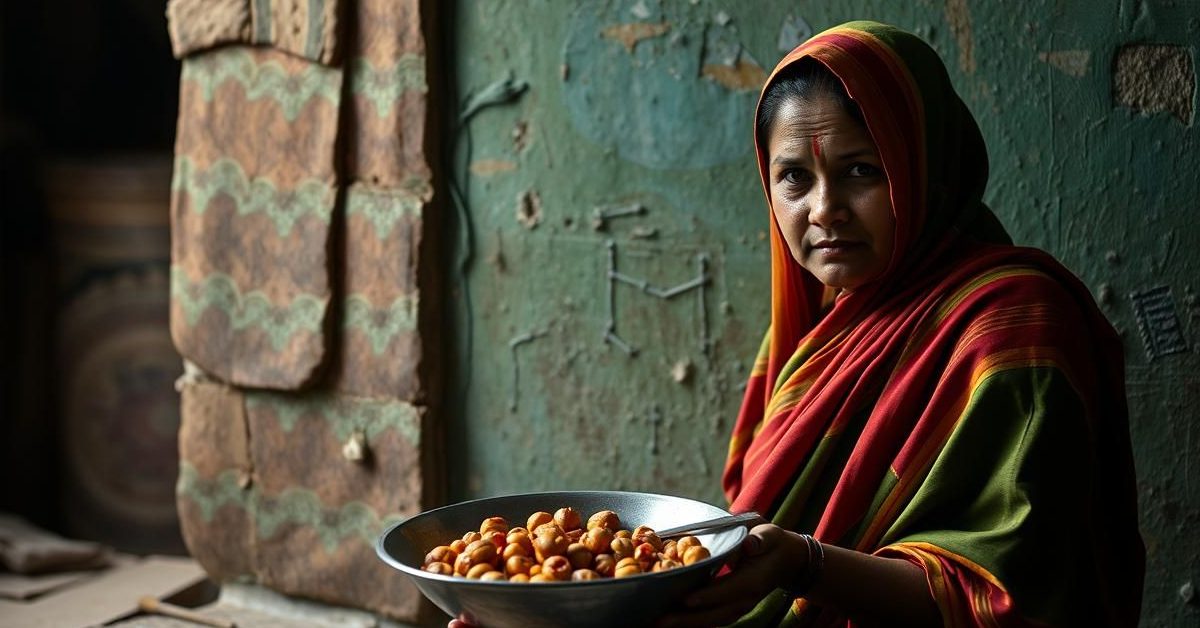In India, women’s nutrition is not merely about food intake but a complex issue deeply influenced by socio-cultural norms, gender roles, and economic disparities.
India’s Nutrition Challenges
Post-independence India faces a “triple burden” of malnutrition: widespread undernutrition, emerging overnutrition, and persistent micronutrient deficiencies. While national surveys show some improvement, significant concerns remain, particularly regarding children under five, where stunting, wasting, and underweight rates are still high.
The Global Hunger Index and Global Nutrition Report consistently highlight India’s struggle to meet global nutrition targets. These national figures mask an even more complex reality for women, where nutrition transcends simple dietary intake.
The Gendered Face of Malnutrition
For women, nutrition is profoundly shaped by their position in society. National Family Health Survey (NFHS-5) data reveals that anaemia affects a staggering 57% of women aged 15-49, a slight increase from previous years.
This high prevalence is linked to structural inequalities, traditional gender roles, and unequal household food distribution. Culturally, girls are often denied nutrient-rich foods like milk, receiving them only during pregnancy, lactation, or illness. Neglect of menstrual health further worsens anaemia rates, especially among adolescent girls, posing risks for future pregnancies.
Moreover, despite often managing family meals, women frequently eat less and last, leading to their own nutritional compromise. This creates an inter-generational cycle, as malnourished mothers are more likely to have stunted, wasted, or underweight children.
Education and State-Level Disparities
Anaemia rates among women vary significantly across Indian states, with West Bengal and Gujarat showing the highest prevalence. Women from Scheduled Tribe communities often face a greater risk, underscoring issues of access to healthcare and resources.
However, education emerges as a powerful protective factor. Women with higher education levels are less likely to be anaemic, suggesting that knowledge improves dietary choices and health practices. States like Kerala, with high female literacy and robust public distribution systems, demonstrate better nutritional equity. Similarly, Sikkim’s focus on women’s education and healthcare has positively impacted gender and nutrition outcomes.
The Dual Challenge: Overnutrition and Micronutrient Gaps
Beyond undernutrition, India is witnessing a growing crisis of overnutrition, especially among women. For the first time, more Indian women in the 15-49 age group are overweight or obese (41.3%) than undernourished. This trend is more pronounced in urban areas.
Overnutrition increases the risk of non-communicable diseases like diabetes and hypertension. Often, women, as primary caregivers, have limited time for self-care, physical activity, and balanced diets. Additionally, many women suffer from micronutrient deficiencies due to a lack of dietary diversity, particularly insufficient protein intake.
Nutrition as a Fundamental Right
The Indian Constitution recognizes the Right to Food as part of the Right to Life, emphasizing the state’s duty to improve nutrition and public health. India is also committed to ending hunger by 2030, aligning with the Sustainable Development Goals.
To address these challenges, the government has launched several initiatives, including the Integrated Child Development Services (ICDS), National Nutrition Policy, and Pradhan Mantri Matru Vandana Yojana (PMMVY). More recently, Poshan 2.0 has broadened the focus from only pregnant/lactating women and children to include adolescent girls, advocating for a holistic approach, technology use, and behavioral change.
Strengthening Nutrition Missions
Despite numerous policies, their effectiveness varies due to implementation gaps. Grassroot workers, like Anganwadi staff, are often overworked and underpaid, impacting service delivery. Improving women’s nutrition requires a multi-sectoral approach, addressing social justice, healthcare, and economic factors.
Future policies must expand beyond undernutrition to combat rising obesity and non-communicable diseases. Incorporating healthy and diverse diets into state-led initiatives, promoting nutrition-sensitive agriculture, and fostering public-private partnerships are crucial. A multi-disciplinary strategy involving economists, sociologists, policymakers, nutritionists, and crucially, women representatives, will ensure more socially effective outcomes.
- Women’s nutrition in India is profoundly shaped by socio-cultural factors, not just food availability.
- Anaemia is a widespread issue among Indian women, influenced by unequal food distribution and neglect of health.
- Higher female education levels correlate with improved nutritional outcomes.
- Overnutrition and obesity are growing concerns, especially in urban areas, adding to the health burden.
- Effective nutritional programs require multi-sectoral collaboration and a focus on both under and overnutrition.
Addressing these deeply entrenched nutritional disparities requires a sustained, rights-based approach that acknowledges the complex interplay of social, cultural, and economic factors influencing women’s health.















